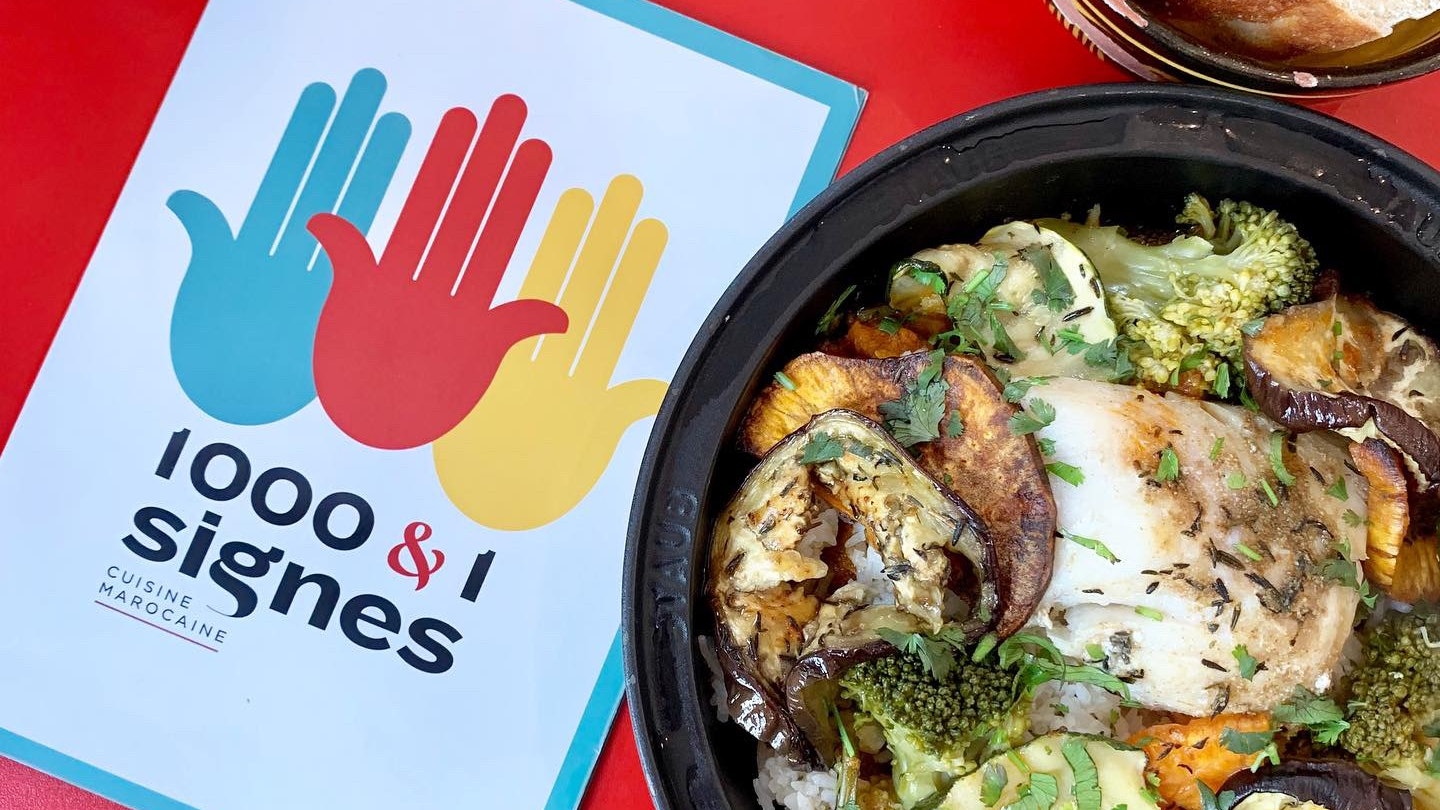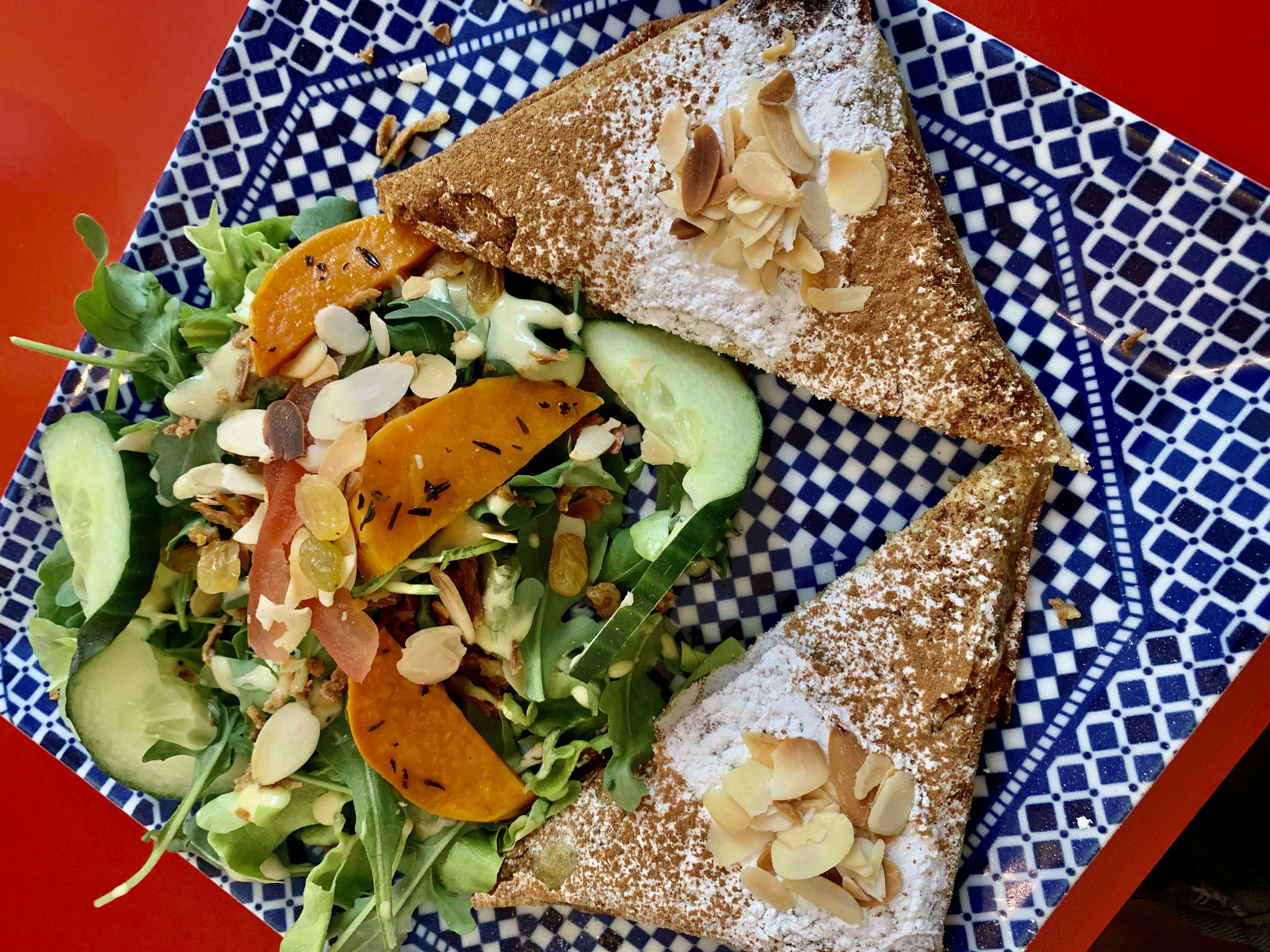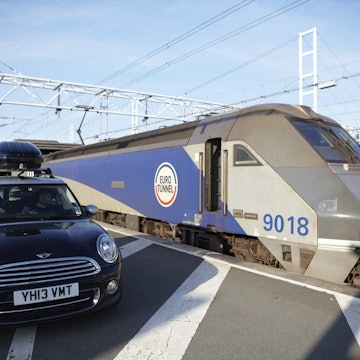
Learn sign-language while dining at Paris’ first Deaf-owned restaurant
Jan 31, 2020 • 6 min read

The red, blue and yellow hands glowing outside the Parisian restaurant 1000&1 Signes are a tantalizing clue about what's waiting inside. Enter the modern space, receive a warm smile and a broad gesture of greeting from the owner, and suddenly everything becomes clear. Sid Nouar is Deaf (along with all of his staff) and uses sign language to communicate, and he is the first Deaf person to open a restaurant in France.

Rather than catering exclusively to Deaf diners, Nouar aims to sensitize hearing customers to French Sign Language (langue des signes française, or LSF) and the diverse ways the Deaf community communicates by creating a space where Deaf and hearing can interact. For a city as discriminating in its cuisine as Paris, however, the singularity of this cozy spot wouldn’t matter if the food served was less than excellent.
No worries. The dishes at 1000&1 Signes, based on recipes from Nouar’s Moroccan mother, are impressive – from the sublime lentil soup to the tender tagines, not to mention a fez-shaped chocolate cake.
As an American Sign Language interpreter, I search out Deaf-owned restaurants wherever I travel. The sign languages in each country vary – there are estimated to be hundreds of different sign languages in use world-wide – but I always appreciate the way Deaf restauranteurs provide visual orientation and make an effort to welcome all guests.
One evening last summer, I arrived early at 1000&1 Signes, where there are just 24 seats and reservations are highly recommended. I chose a seat with a view of the dining room, just as enticing aromas of sautéed onions and cinnamon wafted in from the open kitchen. The lamb and prune tagine I ordered arrived in the conical-lidded pot that gives the dish its name and ensures its tenderness.

While savoring succulent chunks of meat and vegetables, I observed the parade of customers coming into the dining room, and some intriguing patterns. Eighty percent of 1000&1Signes’ customers are hearing, Nouar told me. Attracted to a well-rated Moroccan restaurant in the popular 11th arrondissement (not far from other hip eateries like Septime), many don’t realize they are walking into a space where the employees will not hear their greetings.
I watched as diners entered. “Bonsoir,” they called. “Bonsoir, Monsieur?” When Nouar smiled warmly and gestured them to a table, they appeared confused, then nervous. The menu explains the staff are all Deaf with several options for communicating with them. (Shouting, it is noted, is useless).
When Nouar returns to take orders, some customers point to the dish they want, while others form the handshape of the letter next to each entry on the illustrated menu. An “H”, for example, with pointer and pinky extended, signifies kefta, juicy balls of spiced meat in a fragrant tomato sauce. A small erasable board on each table facilitates more detailed discussion.
You may also like: You can order via tablet at the first Croatian 'Silent Café' in Zagreb

Nouar embodies the Moroccan ideal of generous hospitality. “My family is very warm,” he explains. “Welcoming customers to my restaurant with a smile is like warmly welcoming them to my home.”
Born Deaf in Paris to hearing parents, Nouar is the consummate communicator. When he mimes drinking with a questioning facial expression, diners quickly catch on and point to their choice on the beverage list. He often displays the completed order on his iPad, to be certain there are no mistakes.
On this night, there is a run on pastilla, a dish of filo dough triangles stuffed with a creamy onion and chicken filling. When succeeding customers hold up the “L” handshape for the dish, Nouar shakes his head sadly, indicating in a gesture that the kitchen is all out. As disappointment appears in their faces, he adds a mock tear by pointing to his eye with a sniff.
After ordering, diners typically look about and notice the large photos mounted around the room which illustrate the signs for helpful phrases like “merci,” “bon appétit” and “couscous.” As their comfort level rises, they often initiate gestural exchanges with the staff. I witnessed several patrons who entered anxiously, with eyes downcast, transformed into smiling fans, displaying a thumbs-up as they rubbed their stomachs.
Before opening his restaurant, Nouar taught Deaf children for several years in a bilingual program. But, inspired by his mother, it was clear that cooking was his true passion. After he visited Morocco and prepared tagines for his enthusiastic friends, he sensed a new path.
In 2011, Nouar opened 1000&1 Signes at a much smaller location, where his mother helped cook in the tiny kitchen. In the beginning, Deaf Parisians couldn’t believe that it was actually a Deaf-owned restaurant; a first for the city. Aware that Deaf people face an unemployment rate of seventy percent, Nouar tried to hire an all-Deaf staff, but couldn’t find any experienced Deaf waiters. So, he worked alone serving lunch and dinner six days a week, as well as overseeing the entire operation. It was exhausting.
You may also like: Accessible England: ten of the best places for visitors with a disability

As word spread, the restaurant became a victim of its own success, with a daily line of waiting customers. Nouar sadly closed 1000&1 Signes in 2014 to consider his next move, but always intended to reopen. In 2018, he found the perfect spot for an expanded concept. His logo of stylized hands in the style of a hamsa, carries a double meaning. In the Middle East and North Africa, it is a talisman for good fortune. Plus, hands are a natural symbol for the people who treasure their language of signs.
Nouar serves me a frothy glass of sweetened mint tea with the traditional long pour, raising the teapot to his face as the cascading hot liquid forms a graceful arc. It's a ritual meant to honor the guest even as it aerates the tea. As I sip my tea, I notice a Deaf couple enter and take a table.
While anyone can enjoy 1000&1 Signes, Deaf customers enjoy a level of communication that is hard to find elsewhere. They can pepper their server with signed questions in LSF about any dish on the menu, its ingredients, cooking method, or seasoning. Those of us who can hear take for granted easy communication with our servers. This is unavailable to Deaf customers in the vast majority of restaurants, where the staff does not sign.
For dessert, I try Noaur’s latest addition, a creamy chocolate cake with bright red icing in the shape of a fez. It took three months to create this witty treat, working with a Moroccan pastry chef, testing recipes and collecting feedback from tasters until it was perfect. The cake is emblematic of the restaurant’s success – Nouar oversees every detail, from tweaking recipes to teaching his servers how best to charm customers. Ask him how he does it, though, and he'll say in gestures and winks that “it’s all in the smile."
Get more travel inspiration, tips and exclusive offers sent straight to your inbox with our weekly newsletter. Make the most of your travel with sightseeing tours and activities from our trusted partners.















